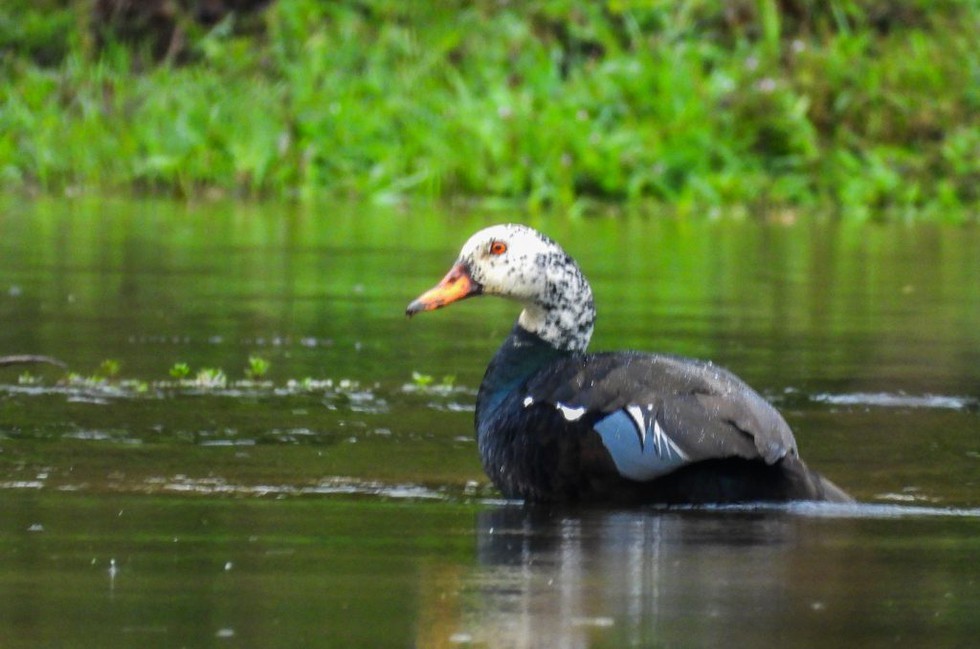
White-Winged Duck

17.02.2025
White-Winged Duck
|
For Prelims: About White-Winged Duck |
Why in the news?
A pair of rare endangered white-winged ducks (Deo Hanh), which is the state bird of Assam, was spotted in Dihing Patkai National Park by conservationists and forest officials recently.
About White-Winged Duck:
- The White-Winged Duck, also known as the White-Winged Wood Duck, is a large, rare, and endangered species of duck found in freshwater wetlands and dense tropical forests of South and Southeast Asia.
- Scientific Name: Asarcornis scutulata
- In Assamese, it is known as ‘Deo Hans’ or spirit duck because of its ghostly call.
- It is considered one of the most threatened waterfowl species in the world.
Distribution of the White-Winged Duck :
- Prefers dense tropical and subtropical forests with slow-moving rivers, swamps and wetlands.
- Found in India, Bangladesh, Myanmar, Thailand, Laos, Cambodia, Vietnam, Indonesia (Sumatra), and Malaysia.
- In India, it is mostly found in the Dibru-Saikhowa National Park, Kaziranga National Park, and the wetlands of Arunachal Pradesh and Assam.
Features of the duck:
- It has a black body, a white head that is thickly spotted with black, conspicuous white patches on the wings, and red or orange eyes.
- Its average length is about 81 cm.
- The sexes are more or less alike, the male having more gloss on the plumage, and being much larger and heavier.
- It is a crepuscular bird, as it is most active at dusk and dawn.The adults are largely omnivorous.
Conservation Status:
- IUCN Red List: Critically Endangered
Source: The Times of India
Consider the following statements regarding White-Winged Duck, recently seen in the news:
Statement-I: It is endemic to Western Ghats.
Statement-II: It is classified as ‘critically endangered’ under the IUCN Red List.
Which one of the following is correct in respect of the above statements?
A.Both Statement-I and Statement-II are correct, and Statement-II is the correct explanation for Statement-I.
B.Both Statement-I and Statement-II are correct, and Statement-II is not the correct explanation for Statement-I.
C.Statement-I is correct, but Statement-II is incorrect.
D.Statement-I is incorrect, but Statement-II is correct.
Answer D